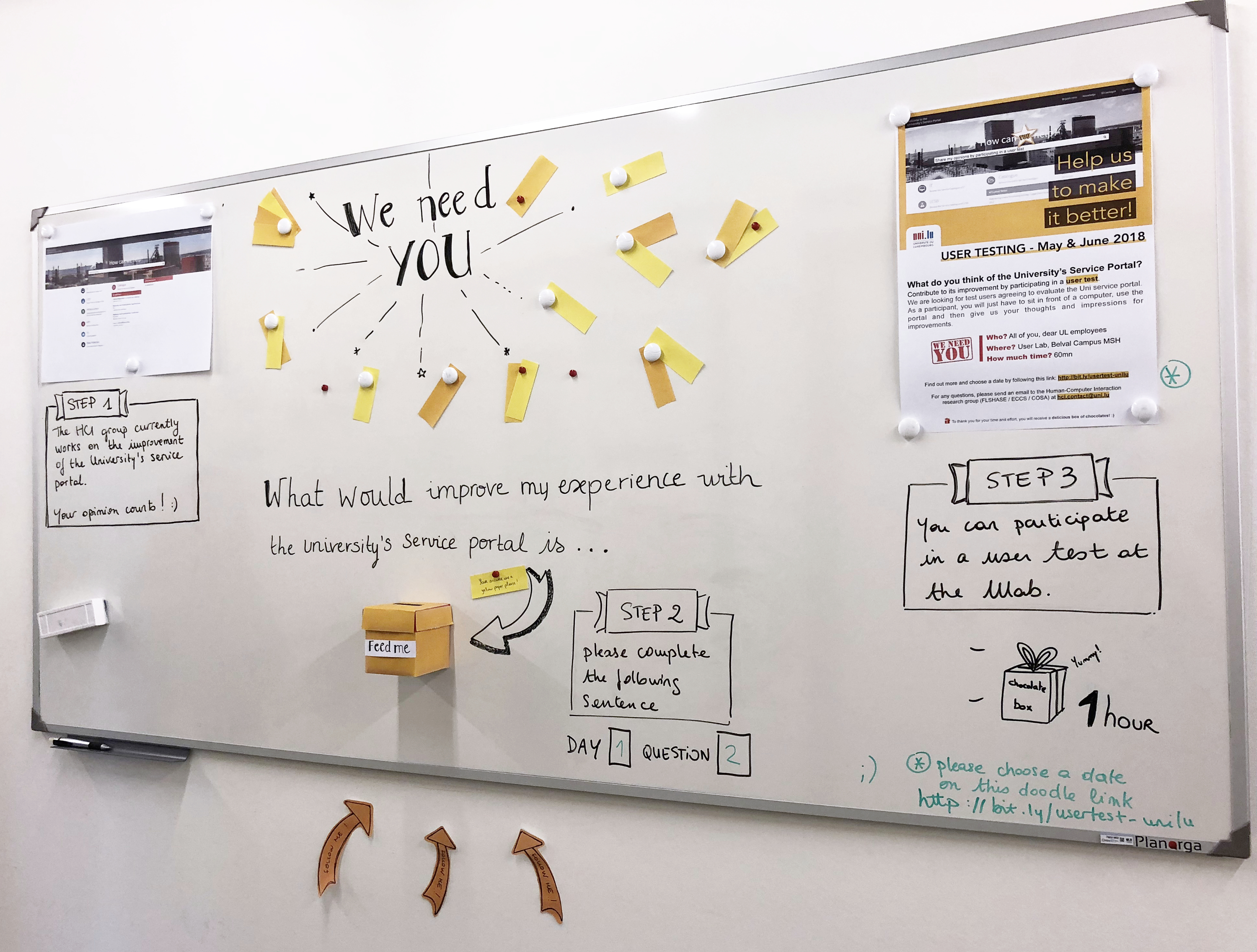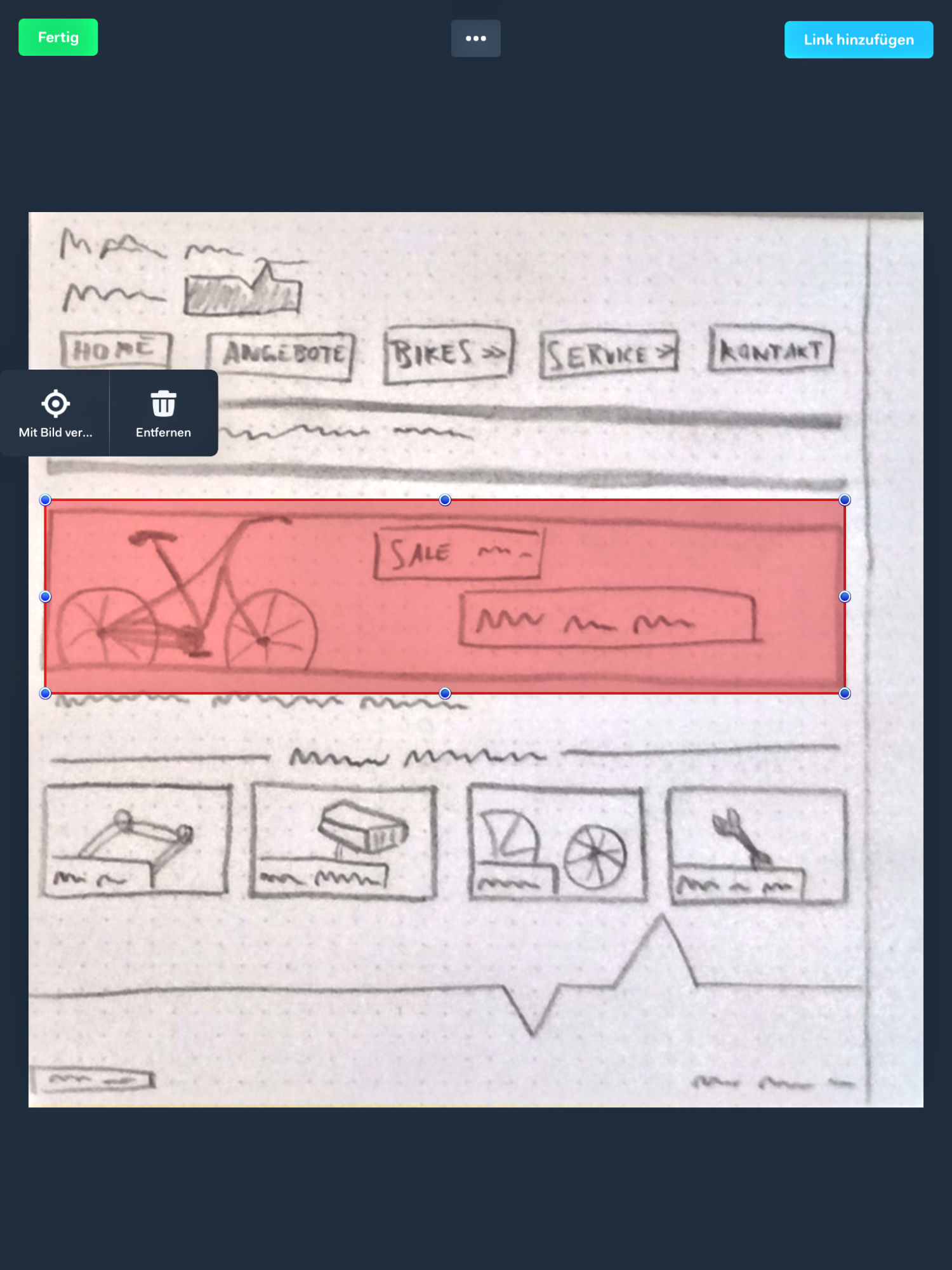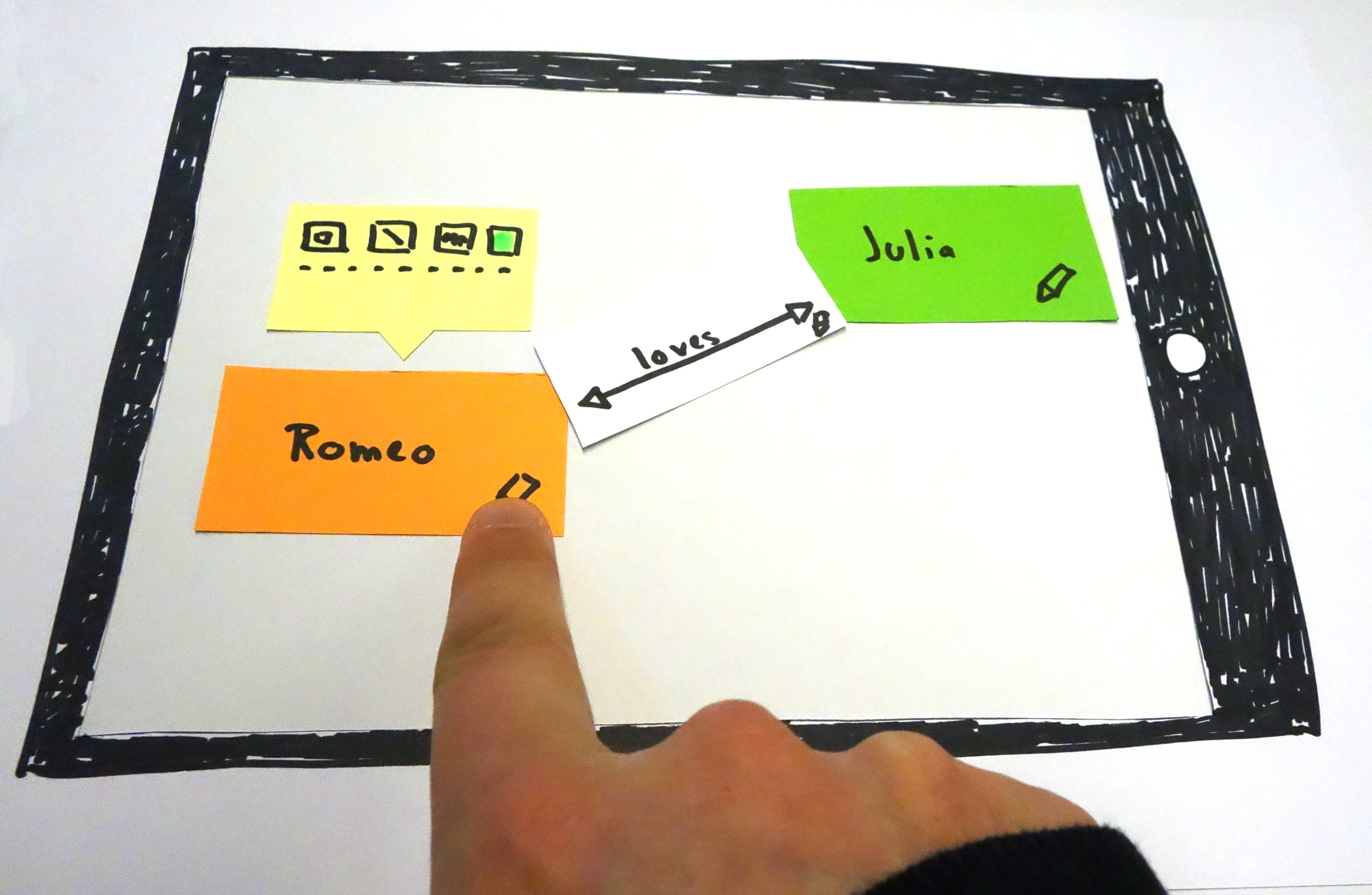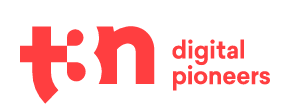Create positive experiences with digital products and services Guerrilla user experience (UX) design
Especially in the digital age, positive user experience is an important differentiation criterion for products and services. Therefore, this user experience (UX) should be considered from the very beginning of human-centered design. With the right ideas, even limited resources are no reason to give up on creating good user experiences. What possibilities does guerrilla-style UX design offer?
When the terms "guerrilla" and "user experience" are used, many think first of the classic: testing prototypes in cafés and other public places. This is not surprising since testing products and services were the first instances of guerrilla UX methods. However, guerrilla UX methods can also play a role in all other phases of product and service design.
UX design phases
"User Experience Design is not a checkbox," UX expert Liz Danzico puts it charmingly in a nutshell: "You don't just check it off and then move on to something else. It must be integrated into everything you do." In order to create a good user experience, UX designers do not start talking to users as late as when they are testing. Rather, UX determines the entire design process like a red thread.

What this process looks like in detail naturally depends very much on the individual conditions, and there are many different models of how a UX design process could look like. This article is based on "The Wheel" by Rex Hartson and Pardha S. Pyla. It is an iterative process in which phases of user research (exploration, needs analysis), idea generation, prototyping, and evaluation are circularly based on each other and often merge seamlessly.
Exploring user needs
No matter how much you test and optimize: The prerequisite for good user experience is that a product or service meets the needs of the people it is intended to address. During the exploration phase, therefore, the most important thing is to understand the audience. This does not include only typical questions of market analysis, but especially psychological aspects: What needs do people actually have concerning the planned product or service? What drives them? What frustrates them? How could your product or service improve their lives?
To find answers to these questions, UX researchers use a whole range of methods. These methods basically fall into one of three categories (according to Carine Lallemand, "Méthodes de design UX"):
- observe what people do,
- listen to what people say, and/or
- analyze what people create.
Ideally, companies and organizations rely on a healthy mix of all these possibilities during the exploration phase. They should pay attention to representative and balanced results because, after all, this analysis forms the basis for further design decisions. A good start is to observe users in their environment and to immerse yourself as deeply as possible in your users' context. For example, if you are designing an app for a museum, it is essential to spend a few afternoons in a museum and keep your eyes on the visitors: Are they more likely to travel alone or together with others? What is the relationship between the people? If they are in groups, do they know each other well? Are some of them dependent on others, e.g. children on their parents? Is it primarily a business or a leisure activity? Do people have a recognizable goal (if so: which one?) or do they rather let the environment inspire them? Similar questions and observation opportunities are, of course, also available for other projects.
However, the exploration phase is not only about understanding what people do, but also why they do it. The classic methods of investigation are user interviews and questionnaires. During the interview, UX researchers meet with several people from the audience and gain insights into their needs in a personal conversation. In a questionnaire, the answers are collected in written form. Thus, questionnaires reduce the effort and allow for a larger number of cases, but require the construction and testing of a questionnaire beforehand - so you need basic knowledge about how closed and open questions should be formulated without distorting the results. In addition, UX researchers must ensure that the questionnaire is distributed and completed in sufficient numbers.
An alternative in guerrilla-style is a mini-survey with the means of sentence completion. This variant relies on open sentence beginnings (e.g. "I'm most annoyed by public transport..." or "Sending e-mails safely means to me..."), which encourages people to answer. In contrast to open questions, the beginnings of these sentences already focus on the area of interest somewhat, so that evaluation is simplified. However, UX researchers should test the beginnings of sentences beforehand so that they are not too restricted or misleadingly formulated.
The figure below shows such a sentence completion in guerrilla-style. The UX researchers Maylis Ader and Solène Meurice performed it using a whiteboard in a public hallway of a university. Still, the approach can be similarly performed in all places where people from the audience are present. UX researchers write the beginning of a sentence as conspicuously as possible in a free part of the whiteboard and ask the audience to complete it. Next to it, they hang a pen, small reply cards, a box with a slit for posting and, if necessary, screenshots and similar material for inspiration. After a few days, the UX researchers collect the box again to evaluate what the passers-by have thrown in there. As an incentive, sweets such as small chocolate bars are a good idea. UX researchers simply write that they are only meant for participants and trust in the honesty of the passers-by. Of course, the question can also be exchanged after a fixed time. A variant of this: Instead of an anonymous box, sticky notes can also be used. Participants can then also read other people's answers and comment on them.

Collect ideas for solutions
At the end of the exploration phase, extensive data on your audience is ideally available. Now it is important to generate as many ideas for solutions as possible. You want to react to the discovered user needs and create the desired user experience. What could be more obvious than integrating users directly into the design process? Such approaches to actively integrate affected stakeholders into the design process are summarized under the terms "participative design" or "co-design". These approaches help not to lose sight of the perspective of the people addressed and to arrive at innovative solutions.
One example in guerrilla-style is collaborative design workshops using the "3-12-3 brainstorming" method (taken from David Gray's book "Gamestorming"). The name is derived from the duration of the individual steps:
- UX researchers organize a workshop with about 12-18 people from the audience.
- In a short introduction, the participants learn what the product or service is about. This introduction should be based on the results of the exploration phase, of course.
- The UX researchers then divide them into groups. Three to four groups of about four or five people each are useful in practice. Each group is allowed to discuss possible solutions for about three minutes freely.
- In the next step, the UX researchers hand out paper, pens, and other materials and ask the participants to work out one of their ideas. Sketches are sufficient, and any means of presentation are allowed. The main objective is to understand what an idea is all about, not to create pieces of art. The participants have ten to twelve minutes to work out their ideas.
- Afterward, each group presents its results in the plenary session. The plenum may ask questions or discuss the ideas. It is important to be brief: Each group should be ready after about three minutes of presentation.
- Depending on the number of participants, a workshop will then take about 30-45 minutes.
From a guerrilla-UX point of view, these workshops have several advantages: They can be carried out with a manageable amount of effort, but still lead to a large number of results. Through discussion with the plenum, the UX researchers learn during the data collection process which of the ideas are particularly popular. In an additional step, you could ask the participants to react to the discussions and further elaborate on their ideas. Last but not least, brainstorming is fun, and it is not uncommon for participants to want to be kept up to date on the further course of the project.
Of course, the ideas from the workshops often cannot be transferred 1:1 into products or services, because rarely all relevant aspects can be sufficiently considered. However, this is not the goal at all. The goal of this phase is to find ideas and approaches to solutions from the users' point of view. Co-design sessions like the ones outlined above are ideally suited for this. They often bring to light perspectives that the user experience designers had not considered. On the way to the "finished" product, of course, a lot still has to happen: It requires a critical view from designers, creative experiments based on all collected data, and many iterations in which the solution approaches are improved step by step. At this point, the ideation phase moves on to the generation phase.
Create prototypes
The generation phase is all about prototyping. This is where the most promising ideas from the previous project phase are transformed into a tangible form. The aim is to develop sketches, click dummies, and prototypes that can be put to the test with people from the audience. The rule is as much work as necessary, but as little as possible.
The spectrum of prototypes ranges from drawings and paper dummies (lo-fi, low fidelity) to functional prototypes (hi-fi, high fidelity). Lo-Fi prototypes made of paper are perfectly suited for guerrilla UX tests. Apps such as POP by Marvel allow you to photograph drawings and provide them with links. Powerpoint and Keynote are also valuable tools: By linking individual areas with other slides, interactions can be simulated quickly. In this way, simple interactions can be tested, and a large number of ideas can be tried out in one afternoon. Prototypes can then be further elaborated using specialized prototyping applications such as Moqups, UXPin, InVision or Marvel.

However, it does not always have to be a complete prototype: Sometimes, UX researchers also want to work out a partial aspect of a digital product to be able to test it, for example the information architecture. Here too, users can be wonderfully integrated. One example is Delphi Card Sorting, which goes back to the computer scientist Celeste Lyn Paul. It represents a guerrilla alternative to classic card sorting:
- The first participant receives a pile of paper cards labeled with keywords about the contents of a digital product. The task of the participant is to sort and group these cards in a reasonable way. The groups should also be given names (open card sorting).
- While UX researchers perform several of these data collections in classic card sorting and then analyze commonalities, the process is shortened in Delphi card sorting. Participant 2 no longer starts from zero but builds on the result of participant 1. However, he or she may restructure everything as wished.
- The third participant builds on the result of participant 2 but is free to restructure again. This procedure is repeated several times.
After about eight to ten runs, a result usually crystallizes: In the ideal case, it is noticeable that several participants do not make any more major changes in succession. Such a result indicates that the current structure represents a form of consensus. However, sometimes there are obvious conflicts in which the participants switch between two or more variants. Such a result can be interpreted to mean that there are different opinions on the topic. Thus, a compromise should be sought that is acceptable to all audiences.
Test, test, and test
No matter whether the generation phase results in a paper sketch, a functional prototype, or a partial aspect such as an information architecture: Whether you have really hit the nerve of the target group and are on the way to a good product or service can only be found out during testing. The sooner this testing happens, the better: With early and frequent testing, you can avoid spending time and effort on approaches that turn out to be wrong. Testing can, of course, also be done with a manageable amount of effort: read my post on guerrilla UX testing for details.

Conclusion
Positive user experiences do not just happen by chance: they are the result of strategic planning and continuous optimization. User experience should, therefore, run like a red thread through the entire process of designing digital products and services. Integrating UX in all design phases creates the basis for positive experiences and successful products and services. With the powerful processes of guerilla UXDesign, even limited resources are no obstacle.

Note: This article is a translation of a version published in the German technology magazine t3n, issue 57, in September 2019.

 11 minutes estimated reading time
11 minutes estimated reading time 